
Talking about art without mentioning sculptures is impossible. Since its history goes back to the dawn of humankind, sculpting has been one of the most prevalent art forms. In fact, sculptures are everywhere, from tiny bibelots on our shelves to enormous statues in city squares.
It's not hard to find sculptures in public spaces. Statues of great leaders, philosophers, authors, or influential people can be found everywhere in any city, and seeing each is nearly impossible.
Nevertheless, if you’re planning a visit to London or are already in the city, you should know it’s the perfect place to see some famous public sculptures that every art lover must know about and, if possible, see.
If you want to travel through artful streets to see the most famous public sculptures, you're in the right place. In this post, we'll list the top 10 sculptures in London that every art lover should see.
10 Most Interesting Public Sculptures in London
1. Trafalgar Square Lions by Edwin Landseer, 1867
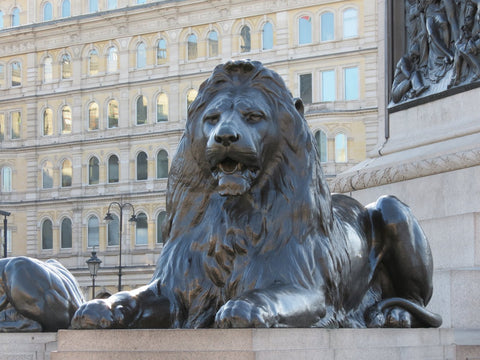
Trafalgar Square Lions were among the most famous artworks by Sir Edwin Landseer, a 19th-century painter and sculptor who was one of the most renowned animal painters of his time, known for masterful depictions of horses, dogs, and stags.
Even though Sir Edwin Landseer created many other famous pieces, Trafalgar Square Lions were his masterpieces. His proud lions sit on Trafalgar Square in London, gazing at the crowded square with fierce eyes, demonstrating the talent of their creator with all their majesty.
2. Shaftesbury Memorial Fountain by Alfred Gilbert, 1893
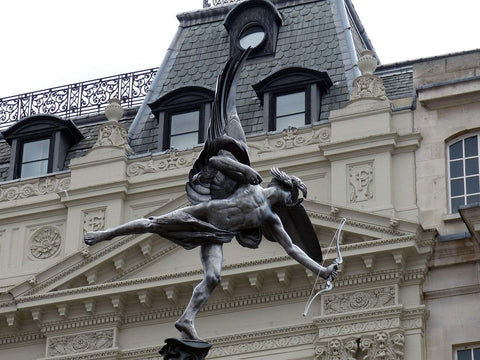
Alfred Gilbert's Shaftesbury Memorial Fountain is an excellent representative of Victorian art and sculpture. Even though the artwork is known as "Eros," it's actually the depiction of Eros's brother Anteros, the God of one-sided love.
3. The Burghers of Calais, by Auguste Rodin, 1915
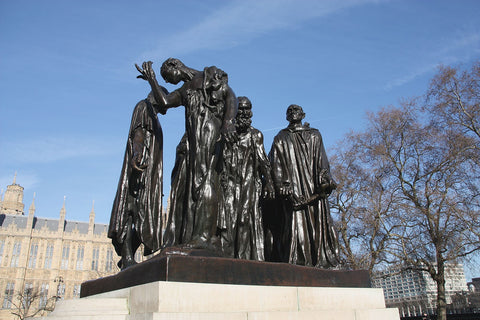
We can call Auguste Rodin the most famous sculptor of the 20th century. His works inspired many future artists and art movements, ornamenting the streets of European cities. And the Burghers of Calais, depicting a heroic sacrifice of one’s life for their countryman, was one of his masterpieces.
Rodin based the Burghers of Calais on a medieval account of when the King of England sieged the French city of Calais and demanded six of the city's leaders surrender themselves; in return, he would spare the lives of the residents.
4. Royal Artillery Memorial by Charles Jagger, 1925

A howitzer aimed at the sky, surrounded by soldiers guarding the pedestal ornamented with war scenes, the Royal Artillery Memorial by Charles Jagger is a true reminder of the horrors of war.
The sculpture, dedicated to the soldiers in the Royal Regiment of Artillery who fought and died in World War I, differs from other WWI memorials with its unique architecture. The memorial sits in Hyde Park Corner in London.
5. 55 Broadway by Jacob Epstein, 1928
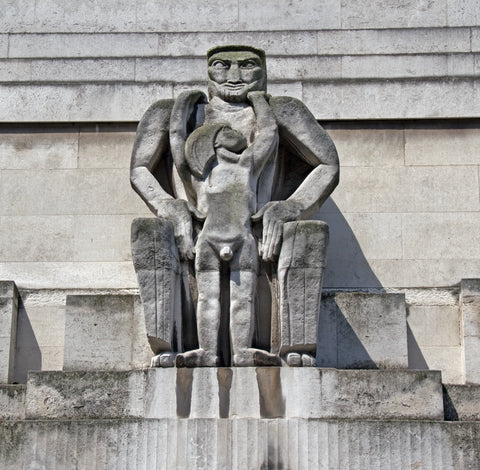
It's not uncommon to see statues of gargoyles and other creatures on the walls of buildings. It seems Jacob Epstein thought the same way and decorated the wall of 55 Broadway with a unique piece. The sculpture, named Day, was one of the early examples of modern sculpture and, unsurprisingly, was quite controversial.
Londoners thought the artwork was a bit too naked for the time, and Epstein even had to remove 1.5 inches of the smaller figure's penis. Nevertheless, Day survived the public outrage and became one of the finest examples of Epstein's artistic style.
6. Fulcrum by Richard Serra, 1987
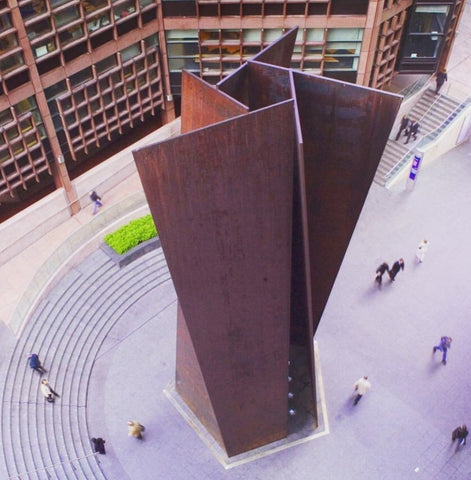
Fulcrum is simply five sheets of weathering steel welded together to create a 55-foot statue soaring to the sky. Located in the Liverpool Street station, the sculpture is a must-see for those interested in modern art and the creativity of Richard Serra.
Fulcrum is a bold and modern example of the purest form of art. Five objects we might have nothing to do within our daily lives create a composition that reminds us how industrial our modern world is.
7. A Conversation with Oscar Wilde by Maggi Hambling, 1998
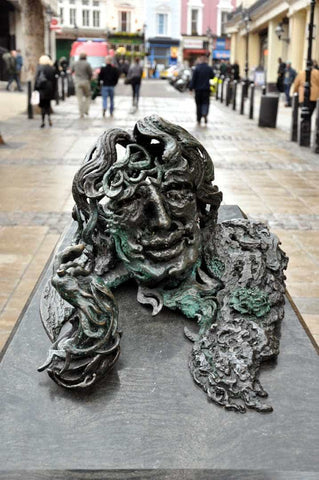
A Conversation with Oscar Wilde is one of the few statues of Oscar Wilde in London. The sculpture depicts a coffin-like bench from which Oscar Wilde emerges. The artwork's concept is to allow people to "chat" with the famous playwright while having a rest.
Even though the statue became popular due to its playful depiction of Wilde, it has also been a tad controversial and widely criticised. The statue was repeatedly vandalised, with members of the public regularly removing the cigarette.
If you ever want to know how it feels to chat with Oscar Wilde, you might like to visit the statue on Adelaide Street.
8. Quantum Cloud by Antony Gormley, 1999

Next to the Millennium Dome, soaring to the sky over the Thames, Quantum Cloud is a unique piece of art. A glimpse at the statue will reveal that the steel formations of the Cloud form the silhouette of a man.
The sculpture, completed in 1999, is one of the tallest statues, with a height of 30 metres. A perfect example of contemporary art, Quantum Cloud is definitely a must-see for art lovers. Plus, its prime location offers you a great view of the lake.
9. A Slice of Reality by Richard Wilson, 2000
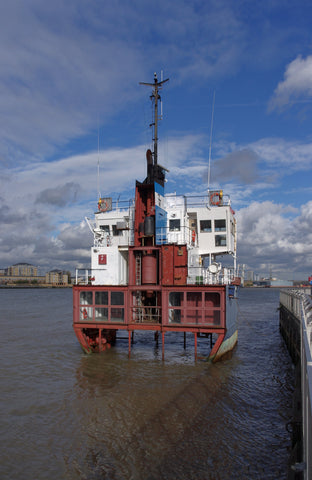
Richard Wilson is known for his savvy and creative style; he usually turns basic objects into awe-inspiring artwork. In A Slice of Reality, we have the cross-section of a sliced sand dredger. The bridge down into the living quarters, vessels and all the boat's interiors are visible to the viewers.
A perfect specimen of modern art., A Slice of Reality is sitting on the banks of the Greenwich Peninsula.
10. William by Rebecca Warren, 2009

William is an ugly giant, a phallic symbol, and an example of perfection in the grotesque. If you look closely at the statue, you can catch various random shapes - if you can call them that. The sculpture neither has a colour nor a structure; it's just a dramatic but aesthetic embodiment of chaos.
Even though William is an artwork lacking the shape and colours we tend to look for on a statue, it sits proudly on Central St. Giles. The sculpture breaks all the rules of aesthetics, redefining the term and demonstrating that a shape or colour isn't necessary to establish a different form of perfection.
What About a Sculpture in Your Home?
The reason we like sculptures is their bold and proud nature. That's why decorating your home with creative sculptures is the perfect way to add a bit of personality to your living space! Check Artchi's extensive collection of sculptures to find the ideal piece for your home.

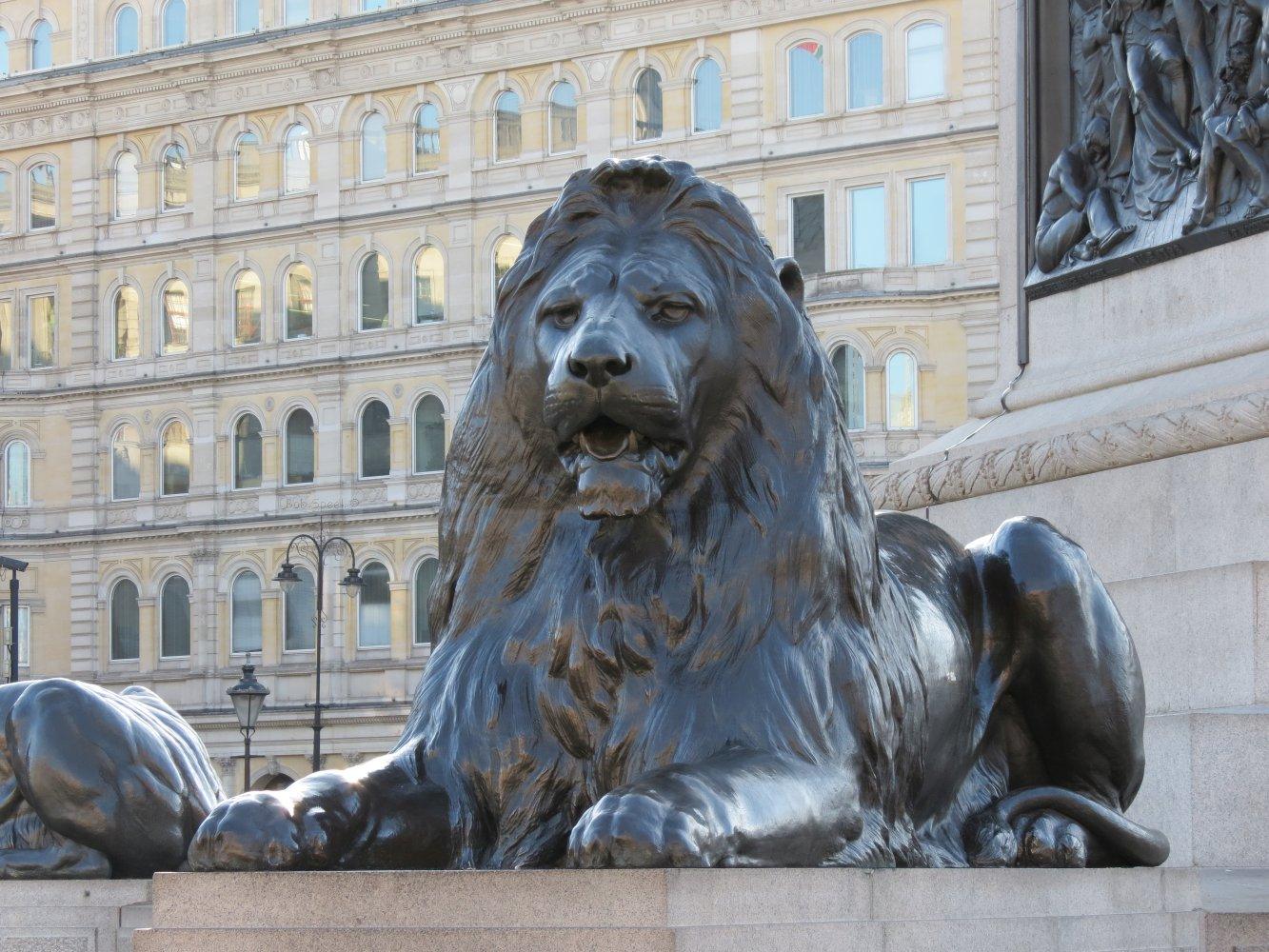


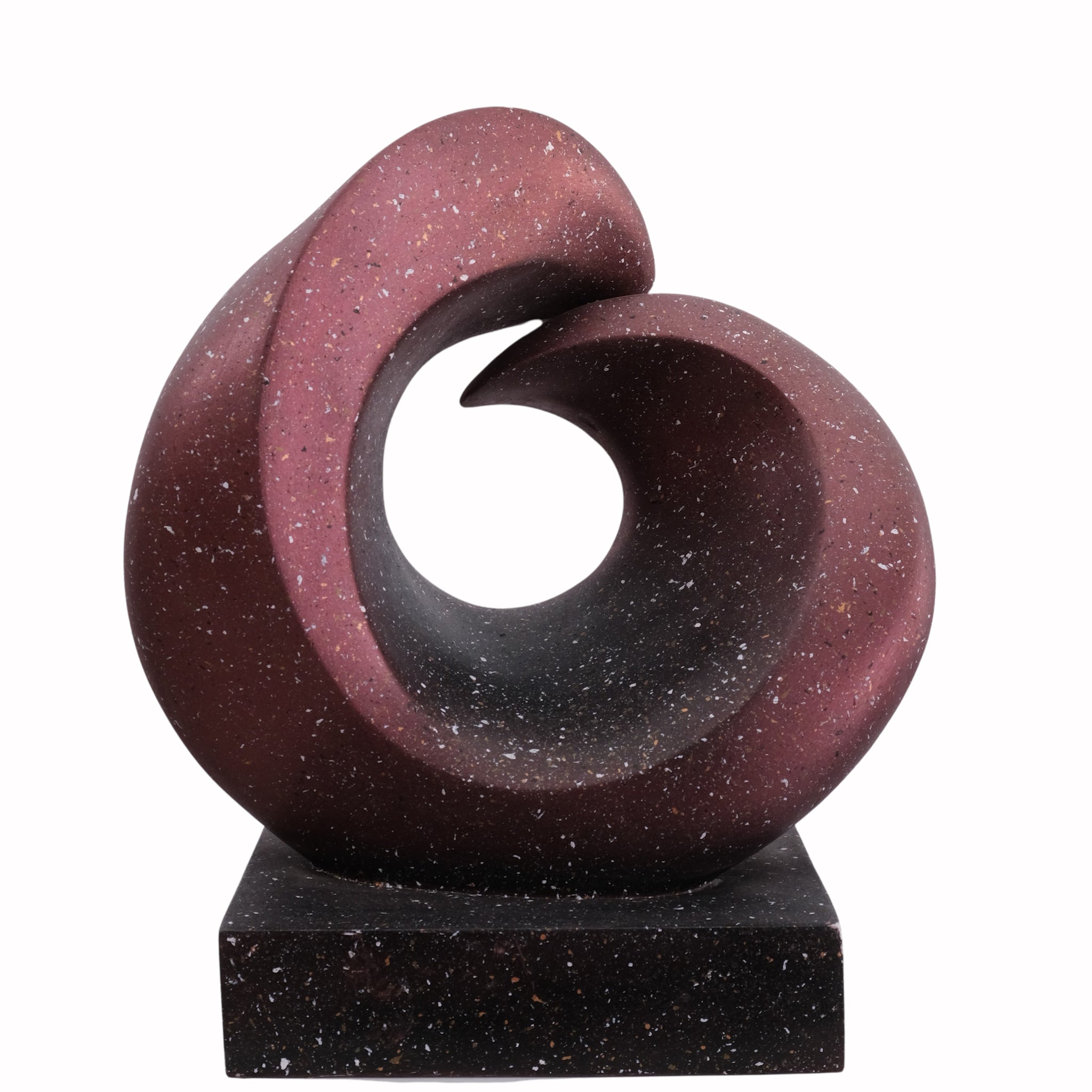
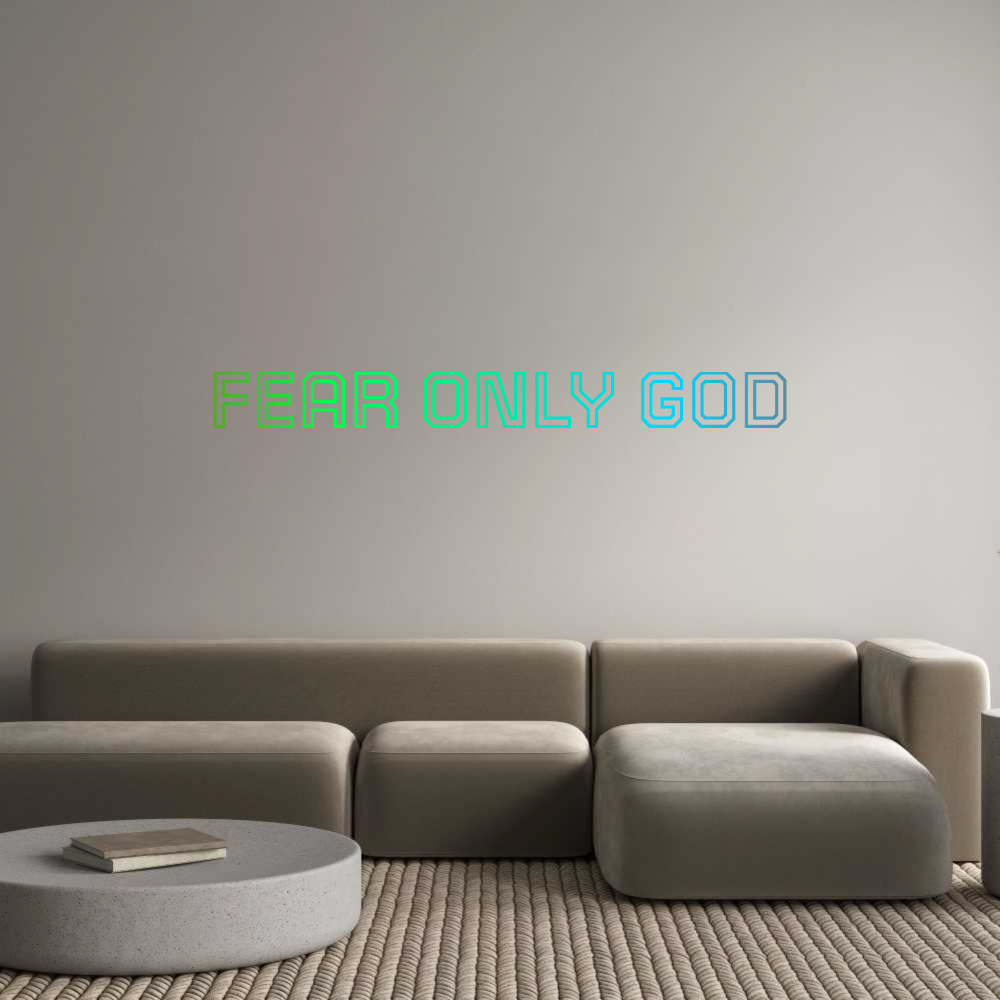
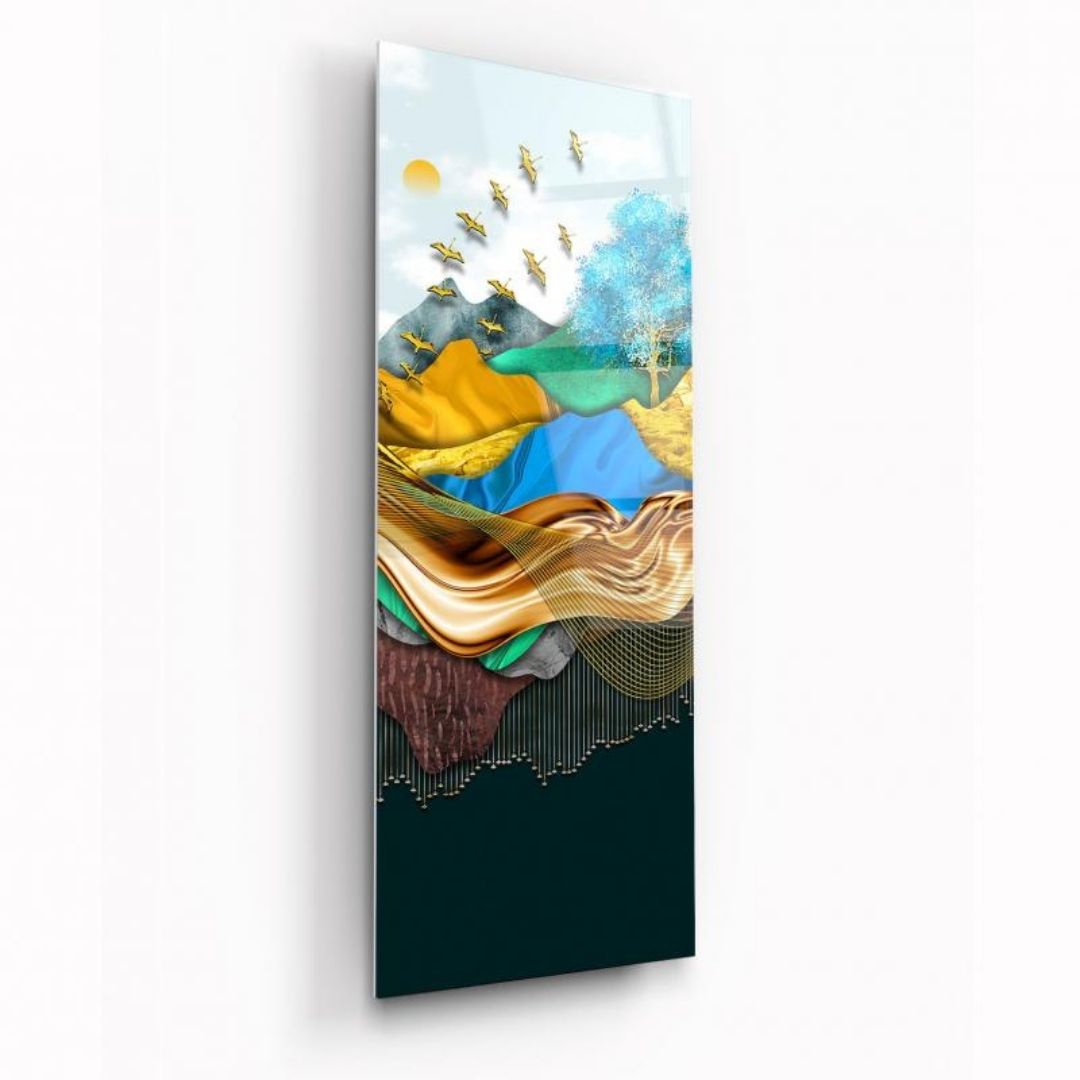
Leave a comment
All comments are moderated before being published.
This site is protected by hCaptcha and the hCaptcha Privacy Policy and Terms of Service apply.